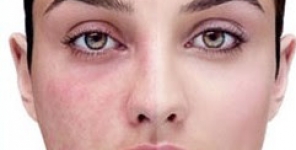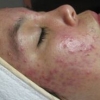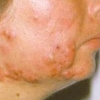Studio di confronto utilizzando diverse fluenze e densità di un laser frazionato ad anidride carbonica per il resurfacing delle cicatrici da acne negli asiatici
 Uno studio randomizzato di metà faccia
Uno studio randomizzato di metà faccia
I trattamenti con laser frazionato ablativo ad anidride carbonica (CO2) da 10,600 nm hanno mostrato dei risultati favorevoli per quanto riguarda la terapia delle cicatrici atrofiche da acne.
Obiettivo
Confrontare l'efficacia e le complicazioni dei trattamenti con laser CO2 frazionato a diverse fluenze e densità.
Metodi
Venti pazienti sono stati trattati con una singola sessione laser CO2 frazionato in modalità Deep FX. Nel gruppo A (n = 10), la metà della faccia è stata trattata con 20 mJ e densità al 10%, mentre l'altra metà con 20 mJ e densità 20%. Nel gruppo B (n = 10), la metà della faccia è stata trattata con 10 mJ e densità 10%, mentre l'altra metà con 20 mJ e densità 10%. Quindi i pazienti sono stati valutati al basale e dopo 3 giorni, 1 settimana, 1 mese e 3 mesi dalla procedura.
Risultati
Tra i due gruppi non si sono osservate significative differenze in termini di efficacia, anche se gli effetti avversi sono stati più evidenti nei pazienti trattati con maggiori densità o fluenze.
Conclusione
Il trattamento delle cicatrici dell'acne con il laser CO2 frazionato in modalità Deep FX può fornire una significativa efficacia impiegando fluenze e densità inferiori e presentando meno complicazioni rispetto all'utilizzo di energie più alte.
Storia della pubblicazione:
Titolo: Comparison Study of Fractional Carbon Dioxide Laser Resurfacing Using Different Fluences and Densities for Acne Scars in Asians: A Randomized Split-Face Trial
Rivista: Dermatologic Surgery. doi: 10.1111/dsu.12467
Autori: Xing-Hua Yuan, Shu-Xia Zhong e Shan-Shan Li
Affiliazioni:Department of Dermatology and Venereology, First Hospital of Jilin University, Changchun, China Department of Dermatology and Venereology, Yanbian University Hospital, Yanji, China
Abstract:
Background Ablative 10,600-nm carbon dioxide (CO2) fractional laser treatments have shown favorable outcomes for atrophic acne scars. Objective To compare the efficacy and complications of fractional CO2 laser treatments with different fluences and densities for acne scars. Methods Twenty patients were treated using a single session of fractional CO2 laser in Deep FX mode. In Group A (n = 10), half of the face was treated with 20 mJ, density 10% and the other half with 20 mJ, density 20%. In Group B (n = 10), half of the face was treated with 10 mJ, density 10% and the other half with 20 mJ, density 10%. Patients were evaluated at baseline and 3 days, 1 week, 1 month, and 3 months after the procedure. Results There was no significant difference in efficacy between different laser settings within the groups, although adverse effects were more evident in patients treated with higher densities or fluences. Conclusion Factional CO2 laser treatment using the Deep FX mode may provide a significant efficacy with lower fluence and density with fewer complications than with higher energies for acne scars.





